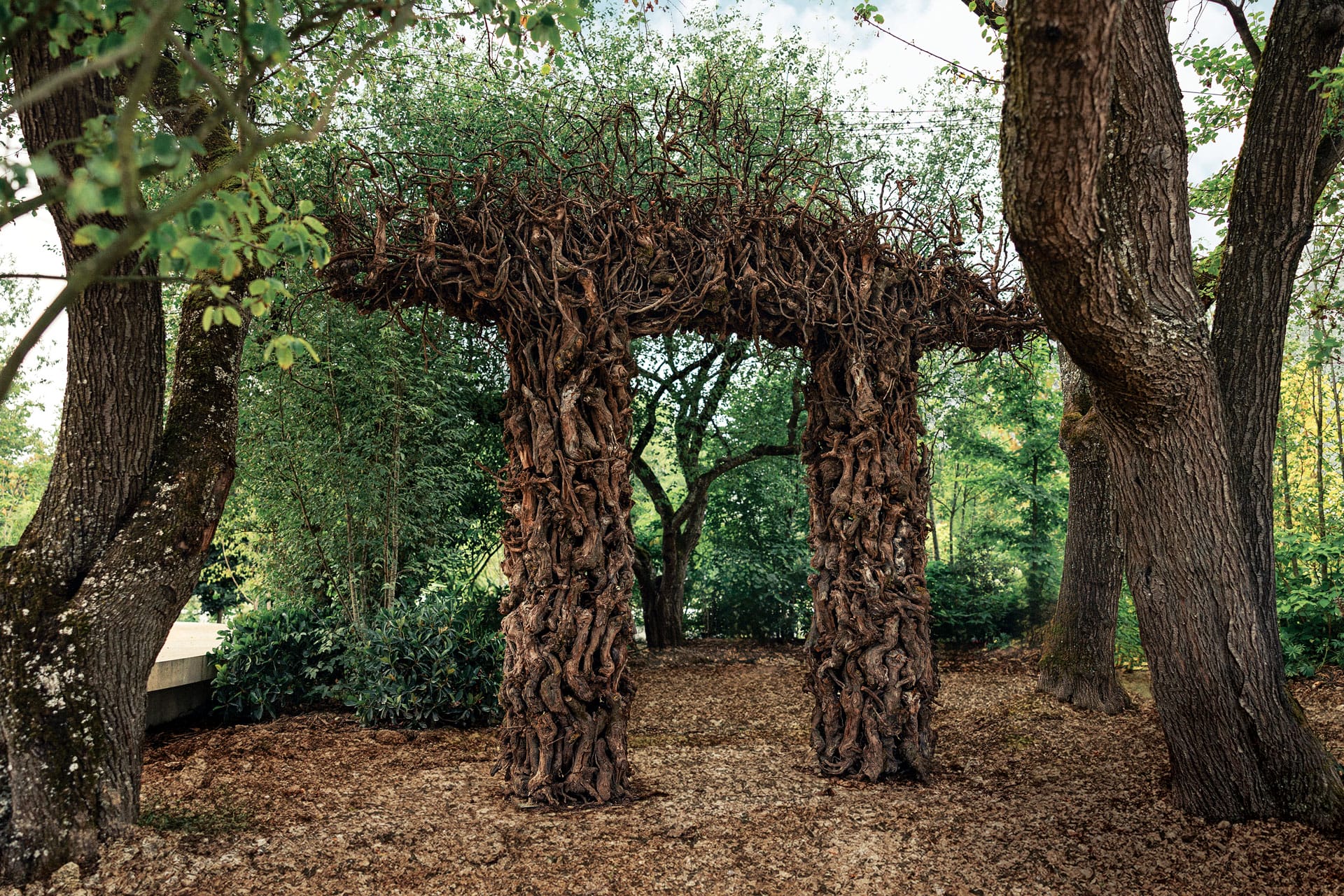Ruinart Invites Artists to Create Dialogue with Nature in New Garden
The oldest established Champagne house continues to find new ways to support art and culture

Although physically located in Reims, France, Ruinart is firmly situated between past and present. Regarded by many as the oldest established Champagne house in the world, dating from 1729, the maison continues to innovate nearly 300 years later—particularly around its support for culture and the arts.
“Ruinart has always been associated with art, and it is part of our DNA,” says Fabien Vallérian, the brand’s international director of arts and culture, who played an integral role in the selection of the artists for the house’s new, 1.73-acre garden filled with site-specific sculptures.

The effort began five years ago, when Ruinart embarked on a dynamic renovation of its château to establish a new visitor experience marked by a glassy welcome pavilion designed by Japanese architect Sou Fujimoto. This undertaking now culminates with the debut of the garden, conceived by landscape artist Christophe Gautrand. “Working with him was a revelation,” Vallérian explains. “He wanted a project linked to the seasons and global warming, and he was open to this story with artists.”
Gautrand devised the new sculpture garden, which lies between the recently added pavilion and the historic buildings, as an artistic experience filled with hornbeams, maples, and pines to complement the site’s majestic beech trees. “The history of Ruinart and the Champagne region is reflected in every detail of the landscaping,” explains Gautrand. “It is a garden for exploring that reveals the spirit of Ruinart.”


That experience is furthered by the installations, executed by 18 artists, who took their cues from the surroundings. “Each work looks at how we live with nature today and creates a conversation around that delicate rapport,” says Vallérian. “The exterior spaces form a scenic path that awakens the senses and generates emotion.”
Although the talents worked in a variety of materials and represent different points of view, their sculptures have one thing in common: They all relate to the environment. Dutch-born Thijs Biersteker, whose artistic practice focuses on climate change, incorporated LED panels and sensors to communicate the health of the trees in real time and measure sap flow. There is also American activist Andrea Bowers, whose suspended steel sculpture is enhanced with nontoxic neon leaves and recycled glass. Her piece hangs as a canopy and states, “To change the world . . . so that there can still be a world.”
German artist Cornelia Konrads, known for her ephemeral structures made from found materials, worked with grapevines to fashion an arch that resembles the façades of the historic buildings on the property. Another German artist, Nils-Udo, found inspiration in Ruinart’s chalk caves to sculpt a monumental yet fragile marble egg with a nest, which he made from local limestone. Eva Jospin and Jeppe Hein, who have collaborated with Ruinart in the past, also made noteworthy contributions.

Overall, the garden is more than just a fashionable curation of buzzy artists. It is also a bold conceptual space to display changing works to see how the plants and trees grow and evolve with the art, forming an otherworldly living creation.
A version of this article first appeared in print in our 2024 Collectors Issue under the headline “Cultivated Terror.” Subscribe to the magazine.